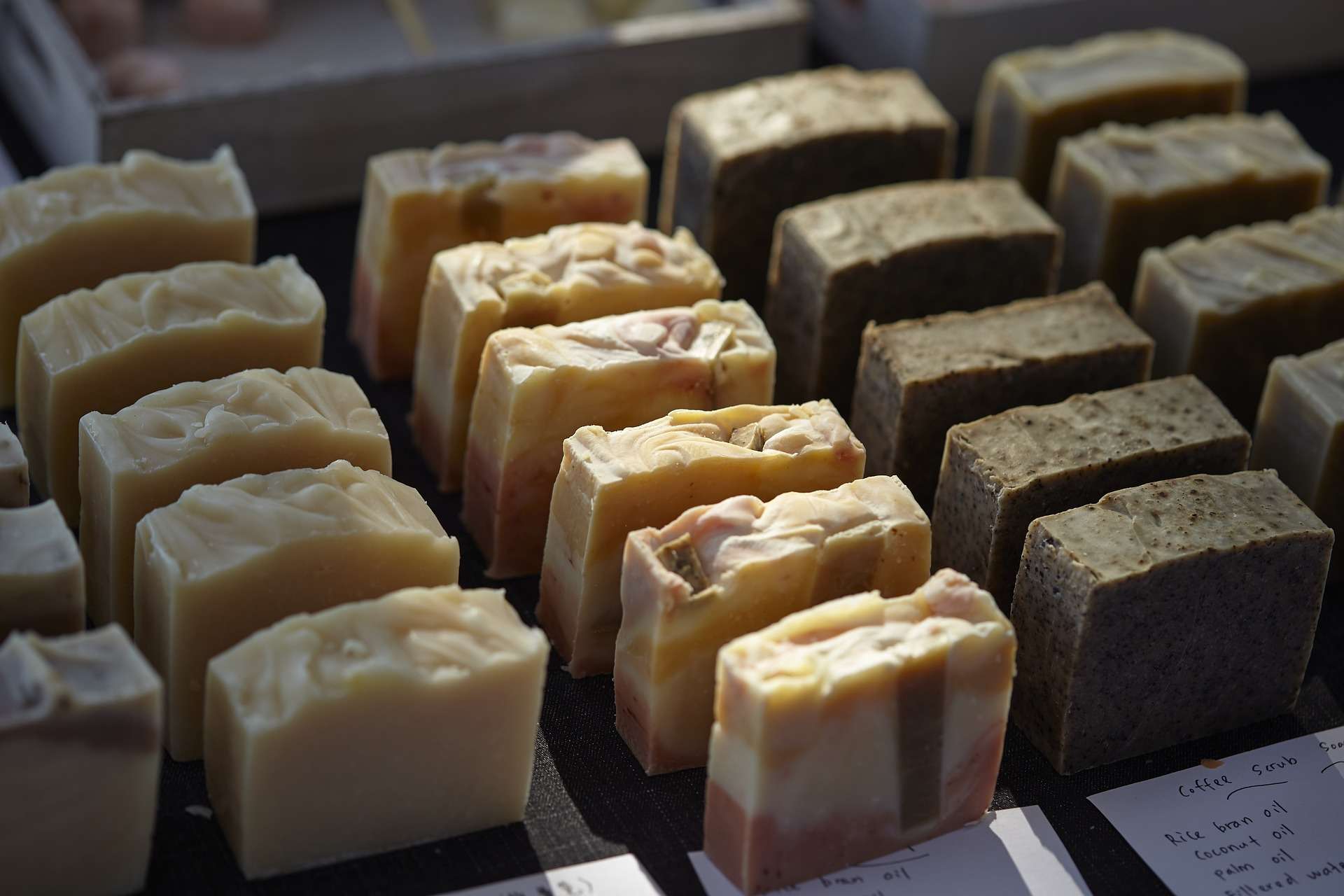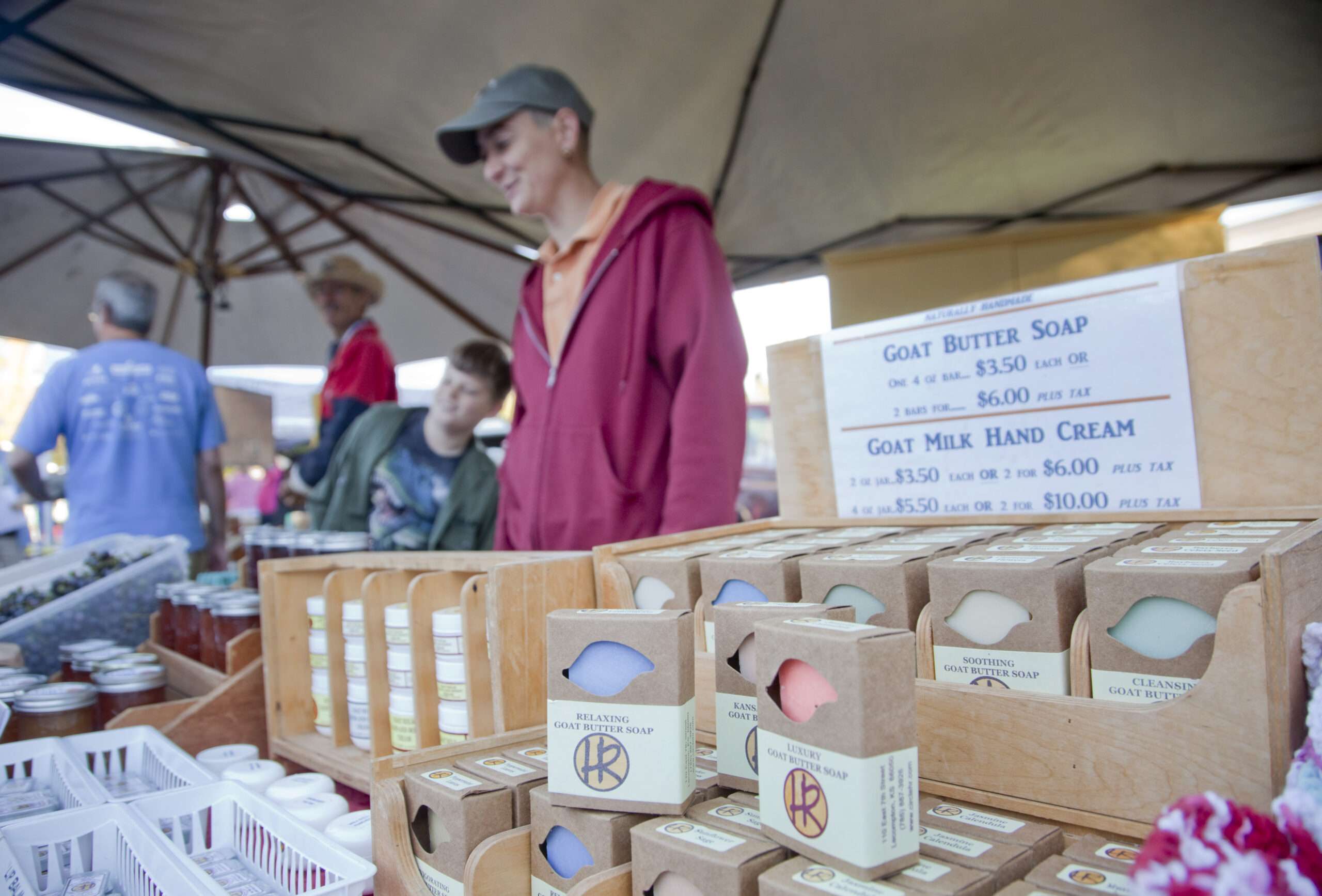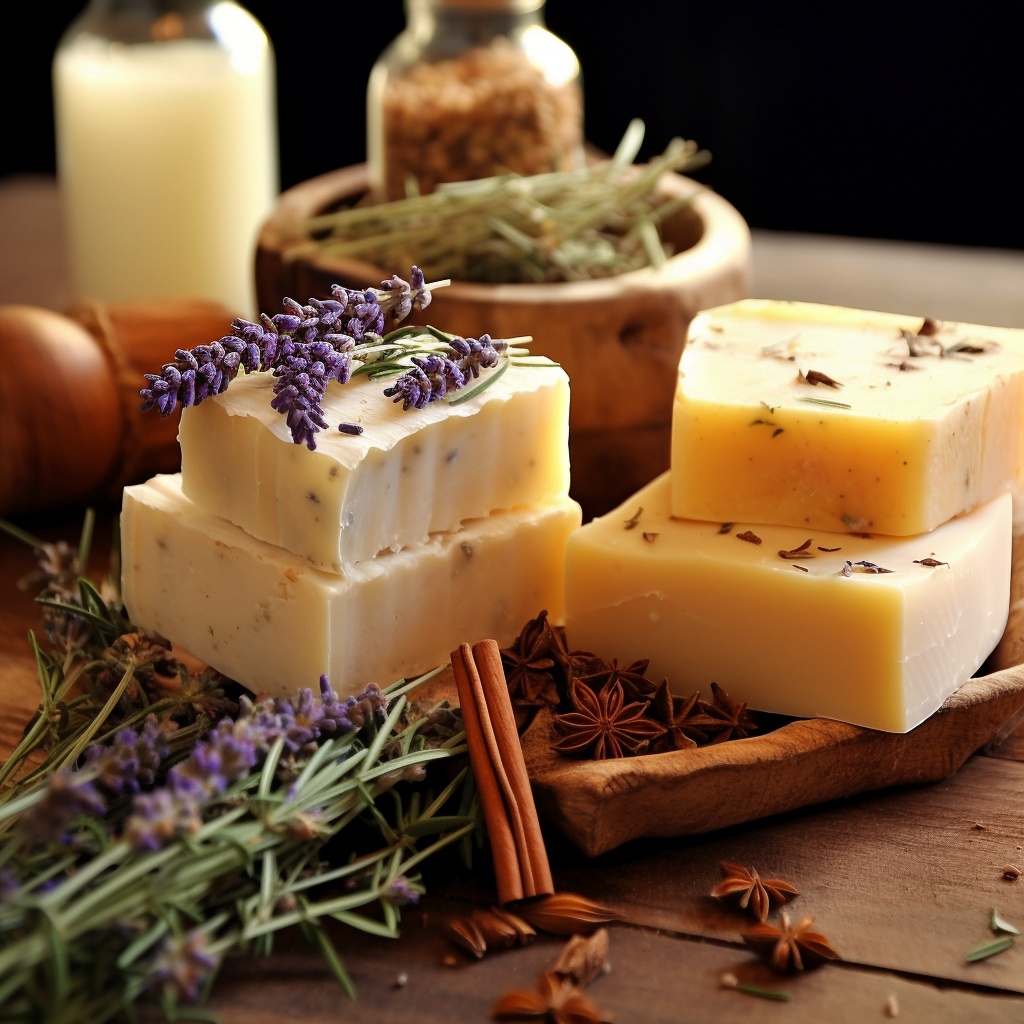Homemade soap has become a popular choice among homesteaders and is hitting the shelves at farmer’s markets everywhere. While the traditional method of soap-making involves using lye, a caustic and potentially dangerous substance, there is a safer alternative. The melt-and-pour method allows for homemade soap creation without handling lye directly. By using a soap base that already contains lye, you can simply melt it down, add your desired color and scent, and create your own unique bars of soap. However, it’s important to note that lye is still essential for soap-making as it acts as a binding agent, allowing the ingredients to mix properly. So, if you’re looking to dip your toes into the world of homemade soap, grab your double boiler, silicone molds, and some fragrance oils, because you’re about to embark on a soapy adventure.
Benefits of Homemade Soap
Popular choice for homesteaders
Homemade soap has become a popular choice among homesteaders for numerous reasons. Firstly, it allows individuals to have control over the ingredients used in their soap. This is especially important for those who prioritize using natural and organic ingredients. Additionally, homemade soap helps to reduce waste and minimize the use of plastic packaging. By making their own soap, homesteaders can contribute to a sustainable and eco-friendly lifestyle.
Can be sold at farmer’s markets
Another benefit of homemade soap is the potential for selling it at farmer’s markets. Many people are becoming more conscious of the products they use and are drawn to homemade, artisanal items. This presents a great opportunity for individuals who enjoy making soap as a hobby or side business. Farmer’s markets provide a platform to showcase and sell homemade soap to a customer base that appreciates the uniqueness and quality of handmade products.
Traditional Soap Making Method
Involves using lye
The traditional method of making soap involves the use of lye, which is a caustic alkaline substance. Lye acts as a key ingredient in the saponification process, allowing the fats or oils to transform into soap. While lye is crucial in soap making, it is important to handle it with caution due to its corrosive nature.
Lye can be dangerous to handle
Lye can be extremely dangerous if not handled properly. It is highly corrosive and can cause severe burns and skin irritation. It is vital to wear protective gear such as gloves and goggles when working with lye. Additionally, it is essential to have good ventilation in the workspace to prevent inhaling the fumes that are released when lye is mixed with water. It is crucial to follow proper safety precautions to ensure a safe and successful soap-making process.
Melt-and-Pour Method

Alternative to using lye
For those who are uncomfortable or uncertain about using lye, the melt-and-pour method offers a viable alternative. This method involves using a pre-made soap base that already contains lye. The soap base can be melted, colored, and scented to create unique and personalized homemade soap.
Soap base already contains lye
The advantage of the melt-and-pour method is that the soap base already contains lye. This eliminates the need to handle lye directly, reducing the risk of accidents or mishaps. The soap base usually comes in the form of a solid block that can be easily melted and molded into various shapes and sizes. It provides a convenient and hassle-free way to make homemade soap without the complexities of working with lye.
Importance of Lye in Soap Making
Acts as a binding agent
Lye plays a crucial role in soap making as it acts as a binding agent. When lye is combined with fats or oils during the saponification process, it helps them to mix and bond together, resulting in the formation of soap. Without lye, it would be impossible to convert fats or oils into soap. The presence of lye ensures that the ingredients combine effectively, resulting in a solid and stable soap.
Allows ingredients to mix properly
In addition to acting as a binding agent, lye allows the ingredients in soap making to mix properly. The alkaline nature of lye helps to break down the fats or oils, facilitating the saponification process. Through this process, the fats or oils are transformed into glycerin and soap molecules, resulting in a cohesive and well-formed soap bar. Lye is essential in ensuring that the soap-making ingredients work together harmoniously to create a high-quality end product.
Safety Precautions when Handling Lye

Lye can be corrosive and cause skin irritation
When working with lye, it is crucial to understand the potential hazards it poses. Lye is caustic and can cause severe burns if it comes into contact with the skin. It is important to avoid direct skin contact by wearing protective gloves and long sleeves. It is also recommended to work in a well-ventilated area to minimize the inhalation of fumes. Taking proper precautions and being aware of the risks associated with lye usage is essential for ensuring a safe soap-making experience.
Handle with caution
When handling lye, it is important to practice caution throughout the process. Measure the lye and water carefully and mix them slowly to avoid splashing or releasing fumes. Always add lye to water, never the other way around, as this can cause a dangerous reaction. It is also advisable to have a designated area for lye handling and a separate set of utensils specifically for working with lye. By taking these precautions and treating lye with respect, you can minimize the risks and create homemade soap safely.
Choosing Fragrance for Homemade Soap
Recommended fragrance oils over essential oils
When it comes to adding fragrance to homemade soap, there are two primary options: fragrance oils and essential oils. While both can provide pleasing scents, fragrance oils are generally recommended for soap making. Fragrance oils are specifically formulated to withstand the soap-making process and can retain their scent for a longer period. They offer a wide range of scents, allowing you to create unique and appealing soap varieties.
Scent adds appeal to the soap
Adding fragrance to homemade soap enhances its appeal and provides a pleasant sensory experience. The scent of the soap can evoke various emotions and create a relaxing or invigorating atmosphere. Choosing the right fragrance can also make your soap stand out among other commercially produced options. Fragrance adds a personal touch to your soap and makes it a more enjoyable product to use.
Preparing Soap Base
Cutting into smaller chunks for easy melting
Before melting the soap base, it is advisable to cut it into smaller chunks. This helps the soap base melt more easily and evenly. Smaller pieces have a larger surface area, allowing for faster and more efficient melting. By ensuring that the soap base is in manageable chunks, you can save time and energy during the melting process.
Using a double boiler to prevent burning
To melt the soap base, it is recommended to use a double boiler setup. This involves placing a heat-resistant container holding the soap base inside a larger pot filled with water. The heat from the boiling water gently melts the soap base without direct heat, reducing the risk of burning or scorching. This method provides a controlled and gradual melting process, ensuring that the soap base remains in optimal condition for the soap-making process.
Shaping and Molding Options
Benefits of using silicone molds
When it comes to shaping and molding homemade soap, silicone molds are highly recommended. Silicone molds offer several advantages over other options such as plastic or metal molds. Firstly, silicone molds are flexible, which makes it easier to remove the soap once it has solidified. This flexibility allows for clean and easy release, ensuring that the soap maintains its shape and appearance. Additionally, silicone molds are durable and can be reused multiple times, making them a cost-effective choice for making homemade soap.
Flexibility and ease of removal
Silicone molds’ flexibility allows for greater creativity and freedom in soap design. They can be used to create intricate and detailed shapes, resulting in visually appealing and unique bars of soap. The ease of removal from silicone molds also minimizes the risk of damaging or distorting the soap during the unmolding process. With silicone molds, you can achieve professional-looking homemade soap with ease and consistency.
Eliminating Surface Bubbles
Using alcohol to remove bubbles
After pouring the melted soap base into the molds, it is common to encounter surface bubbles. These bubbles can affect the appearance and texture of the soap, but they can be easily eliminated using alcohol. Simply fill a spray bottle with rubbing alcohol and lightly mist the surface of the soap. The alcohol helps to break down the surface tension of the soap, allowing the bubbles to disperse. By applying alcohol to the soap, you can achieve a smooth and professional finish.
Ensuring a smooth and professional finish
Eliminating surface bubbles is crucial in achieving a smooth and professional finish for your homemade soap. Bubbles can create uneven textures and pockets within the soap, detracting from its visual appeal. By taking the time to address these bubbles, you can ensure that your soap looks polished and finished. A smooth and uniform surface enhances the overall quality of your homemade soap and makes it more desirable to customers or for personal use.
The Role of Lye in Soap Making
Lye necessary for saponification process
Lye is an essential component in the soap-making process as it is responsible for the saponification reaction. Saponification is the chemical process that converts fats or oils into soap. It occurs when the lye reacts with the fatty acids present in the oils or fats, resulting in the formation of soap molecules and glycerin. Without lye, the saponification process cannot take place, and soap cannot be made from scratch.
Converts fats or oils into soap
During the saponification process, lye acts as a catalyst, breaking down the fats or oils into their component molecules. The hydroxide ions in lye react with the fatty acids in the fats or oils, forming soap molecules and glycerin. These soap molecules are what create the cleansing and lathering properties of soap. Lye is crucial in transforming the raw ingredients into a solid and usable soap product.
In conclusion, homemade soap offers numerous benefits for homesteaders and individuals looking to create their own personal care products. Whether it’s for personal use or for selling at farmer’s markets, homemade soap provides a customizable and eco-friendly alternative to commercially produced options. While traditional soap making involves the use of lye, the melt-and-pour method offers a safer and simpler approach. Lye, despite its potential hazards, plays a crucial role in soap making, acting as a binding agent and facilitating proper ingredient mixing. By taking proper safety precautions when handling lye, one can minimize the risks associated with its use. Choosing the right fragrance, preparing the soap base correctly, and utilizing silicone molds contribute to the overall success and appeal of homemade soap. By following these steps, one can achieve a smooth and professional finish while ensuring the soap’s stability and longevity. Finally, it is important to understand the significance of lye in the soap-making process, as it is essential for saponification and the conversion of fats or oils into soap. By appreciating the role of lye, one can gain a deeper understanding of the science behind soap making and create high-quality homemade soap. So, whether you’re an aspiring homesteader or simply enjoy the art of soap making, consider the benefits and possibilities of crafting your own homemade soap.




